Sowing petunias for seedlings: terms and rules
With the onset of spring, all gardens and summer cottages begin to dazzle with a variety of bushes of the universal favorite - petunias... Every year, more and more breeders are bringing out various flowers, new varieties of lush beauty. It not only possesses a wide range of colors, but also differs in both a simple flower shape and a terry one.
Its most basic advantage is that it takes root well in all areas of wider Russia. The main thing is that it can be easily planted and looked after. An important moment for good and fast growth is laid in the correct planting of the plant.
Contents:
- Petunia: description and the best varieties
- Seed preparation
- Soil preparation
- In what container is it better to plant seeds
- Sowing seeds: terms and rules
- Seedling care
Petunia: description and the best varieties
Petunia - a plant rich in its color range. It is unpretentious to care for, is not afraid of large and frequent watering, but does not tolerate excessive moisture and swampy soils. It is not afraid of drought, does not require shading even in the midday hours. It blooms even brighter and richer in the sun. He loves a fertile substrate, but will not give up poor land if it is periodically fed.
The root of the plant is in the form of a rod, leaves shallow, weakly branches. In short-term moments when the air temperature drops, it stops blooming, but at the first rays of the sun, it blooms again, again delighting with a riot of flowers.
It grows in all conditions: flower beds, flowerpots, curb lawns, indoor pots and hanging planters.
For these purposes, a huge number of different species have been bred, which are subdivided into several separate types:
- Bush
- Ampelny
- Calibrachoa
- Cascading
- Floribunda
Bush species boast different diameters of inflorescences - from 4 cm and from 15. They grow into a chic bush, provided that the upper shoot is pinched. Allocate prominent representatives:
- Series "Grandiflora" - it includes "Russian Size", "Christmas Star", "Ultra", "Gulliver", "Frost Fae". These are hybrid petunias of large-flowered form. They are the most colorful species representatives. Their flowers grow up to 16 cm in diameter.
- Milliflora is a neat compact specimen, with gramophones no more than 3-4 cm in circumference, but they amaze with their abundance and number.
- Multiflora - inflorescences of an average girth of 5-7 cm, the bush is undersized, but endowed with bright colors.
Trailing or creeping petunias are known for their downward growth, which is why they are used for hanging planters. The best representatives of the species:
- The Snow Queen - the length of the whips is 80 cm, the inflorescences emit a pleasant, delicate smell.
- Svetlana - creeping stems reach 1 meter, the edges of delicate petals wave in white and are complemented by veins of pink.
- Masha - the bush branches 80 cm down, stands out in a bright pink tint with a contrasting yellow core.
Until recently, Calibrachoa petunias were also considered a species of a well-known variety, but breeders have proven its simple similarity with petunia. The latter have 14 chromosomes, and in Calibrachoa their number is 18. The most famous species - "Million Bells", is endowed with an abundance of inflorescences, but they are small - only 3 cm.
Cascading species are endowed with chic long elastic stems that tend to twine around everything, grow both to the sides and up. Their numerous flowers do not differ in their huge size, but their average volume is not inferior to anyone. The most revered subspecies among gardeners are highlighted with the following colors:
- Gioconda is a highly branched shrub that is not afraid of any temperatures.
- Double Cascade - endowed with a unique aromatic scent. The double form of medium-sized flowers is presented in a variety of colors.
- Ramblin - the length of the shoots does not exceed 1 meter. A representative of early flowers that attract attention with an interesting aroma and a long flowering period.
Floribunda variety - outwardly similar to a multi-flowered plant, the buds, having opened, show 10 cm in volume, are rich in various colors and a double shape. The most interesting subspecies is Sonya Ohrid, which contains 11 hybrids. They all differ in color, ranging from a violet-blue tone to a delicate pink-crimson color with a white star-core. All petunias are inimitably beautiful, there is not a single flower that does not admire with its beauty and abundance of buds.
Seed preparation
The most difficult moment in the whole growing process is the seed sowing stage. Usually, plants are planted first for seedlings, and then transplanted into open ground or prepared flowerpots. It will not work immediately to sow it into the soil - so the seeds will not grow, they will not even sprout.
The beauty's seeds are small and have a capricious disposition.
For planting, you need a specially prepared substrate and certain conditions for germination. The percentage of seedlings not germinating is very high, so many, having tried it once, no longer undertake this difficult task. Certain special preparation before planting for seeds is not required, they do not need to be soaked or additional processing. The most inconvenient is miniature seeds. Their diameter is mainly 0.2 mm, but sometimes there are quite large specimens - up to 0.5 mm.
It is very difficult to work with such a miniature planting material. The main thing is to purchase seedlings in specialized stores and in no case from your hands. The seeds are sold either in bulk in a package or in a special cone with processed granules. It is better to take granular planting material for planting. It is good because the seeds are enclosed in a shell, which already contains all the nutrients that contribute to rapid and high-quality germination.
Soil preparation
For planting seedlings, soil is needed, light, fine-grained, very light and medium nutritious. To prepare it, you need to combine sod or leafy soil, humus, low-lying peat and sand (river). It is well spilled and dried thoroughly. Each ingredient is taken in equal proportions.
Add 0.5 l to this batch. wood ash, 1 tbsp. potash fertilizer and a handful (250 gr.) of perlite. The resulting substrate should be sieved through a sieve at least 2 times. First on a sieve with large holes, and then with small ones. This is necessary so that any small stones do not fall into the fertile soil and interfere with the growth of a young plant.
If you do not want to overwork yourself with your own preparation, then the primer can be purchased in a specialized store.
Petunia grows well in peat tablets... Before planting, they need to be watered well for swelling. And before planting in open ground, you do not need to free the roots from the shackles of peat, the main thing is to remove the mesh so that the roots can further expand in breadth and be fed by substances from the ground.
Before sowing in a container for 1 day, the soil must be shed with a weak solution of potassium permanganate, then roasted in the oven. Such a measure is needed to protect the seedlings from the black leg, since petunia is easily infected with this ailment. The prepared soil is laid out in a container.A thin layer of drainage is applied to the bottom of the box, and then the remaining space is filled with earth, but so that at least 2 cm remains to the top. The last preparation - the soil is well moistened, but not to a swampy state.
In what container is it better to plant seeds
When the seedlings are purchased, the soil is prepared for planting, you should take care of the container. For this purpose, any option is suitable:
- Wooden containers.
- Plastic flowerpots.
- Plastic cups.
- Egg trays.
The selected container should be thoroughly disinfected by first dousing with boiling water, and then placing the flowerpot in any antiseptic substance (potassium permanganate or formalin).
The landing container should be small and shallow. The main thing is that there are drainage holes at the bottom. If they are absent, then they should be done so that the water does not stagnate and young seedlings do not die. Thus, not only selected high-quality seeds, well-chosen soil, but also flowerpots play an important role for the successful germination of capricious seedlings.
Sowing seeds: terms and rules
You can sow at any time, but it depends on the sowing period when the inflorescences will bloom. If the seedlings are planned for a flower bed, then it is more expedient to plant in early June. Such a late transplantation period is due to the fact that petunia does not like the drop in air temperature, which is still possible at the beginning of summer.
If the petunia flaunts on the balcony, then you can plant seedlings in early May.
For ampelous species, the planting dates need to be shifted somewhat, planting them 2-4 weeks earlier. During this time, they will have time to build up a gorgeous hair of light green fleshy leaves. Thus, for sowing seeds for seedlings for open ground, the period from March 5 to March 15 is suitable for planting seedlings, while it will already be possible to plant ready-made young plants on a flower bed from June 1-5.
Balcony varieties are subject to sowing even earlier than bush varieties. They should be planted no later than February 10-15, then they should be planted in pots for a permanent habitat on May 5-15. It is advisable to plant ampel species already from February 1-5, but always highlighting with phytolamps. The transshipment period into the prepared flowerpot begins on May 1.
Planting material for seedlings is sown in two ways:
- Connect with snow. This method is not only more reliable but also preferable. If there is snow in the yard during the planting period, it should be carefully spread over the surface of the prepared substrate in a thin layer (1-1.5 mm). Snow is distributed evenly throughout the pot or container. Put on top of it seeds in the required order. For this purpose, either tweezers or a toothpick are suitable. Then cover the planting with foil. There is no need to water, the snow will melt and will independently tighten the seedlings to the required depth.
- Mix with sand. This option involves combining a small amount of river sand with seeds. The composition mixes well and spreads evenly over the territory of the earth. It is necessary to water the crops from a spray bottle, after planting, sprinkle them with 1 mm of soil. It is not recommended to water from a watering can, otherwise the water will wash out the seeds.
Thus, there are certain periods due to which flowering can be achieved already in early summer or even late spring. And the correct planting will ensure uniform germination and optimal conditions for growth.
Seedling care
Helpful hints for cleaning:
- After planting, the first shoots appear in 1-2 weeks. At this point, the container should be transferred to a room with a temperature of +20 C.
- The container must be covered with foil or glass, creating optimal conditions for growth. The crops should be supplemented, especially in late February - early March. Additional lighting must be turned on both in the morning and in the evening, for 2-3 hours.
- It is recommended to apply the first fertilizing with fertilizers one month after sowing. After mineral fertilizers are made once every 2 weeks - before transshipment to a permanent place of residence.
- When 3 full-fledged leaves appear, seedlings dive... The process must be carried out very carefully, well moistened the soil before the event. In no case, when moving, it is impossible to fall asleep the growth point of the plant, otherwise it will rot.
- Watering should be carefully monitored: overflow leads to diseases of a fungal nature, but at the same time, drying out responds unfavorably to the condition of the bushes. Initially, watering is done with a syringe. His wears are completely introduced into the ground. It is required that water does not fall on the foliage, this can damage the delicate young leaves. The best method of watering is from the pallet. Water for irrigation of plants requires soft, chlorine-free (settled), room temperature.
Thus, an important point in caring for petunia is its germination at a certain time. After that, only abundant watering and feeding remains. Then the magnificent beauty will illuminate with a bright color until the very frost.
More information can be found in the video:




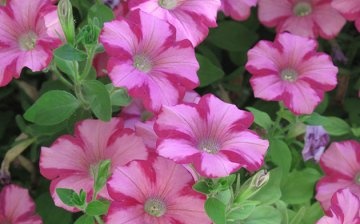
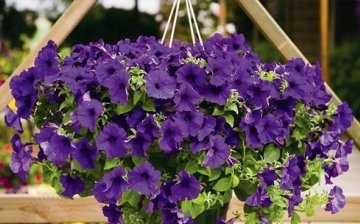
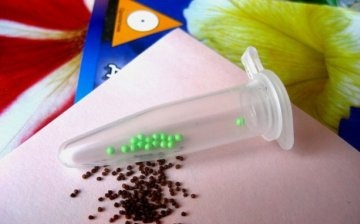
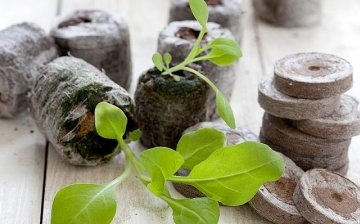
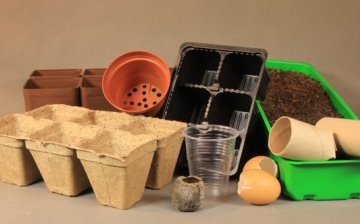
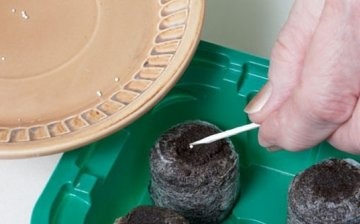









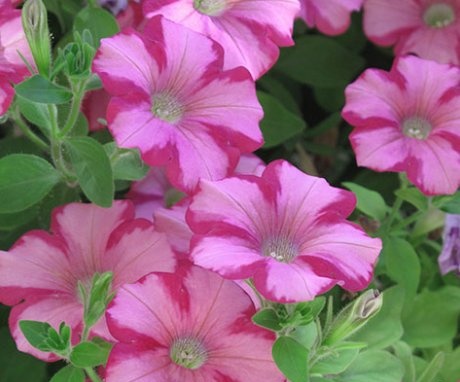
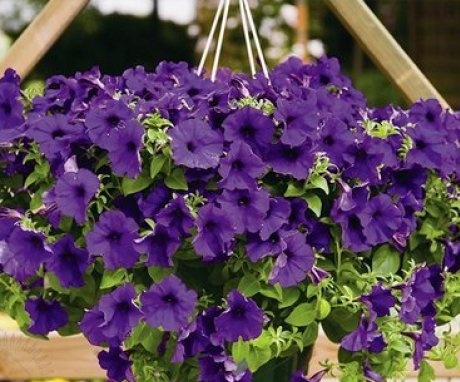
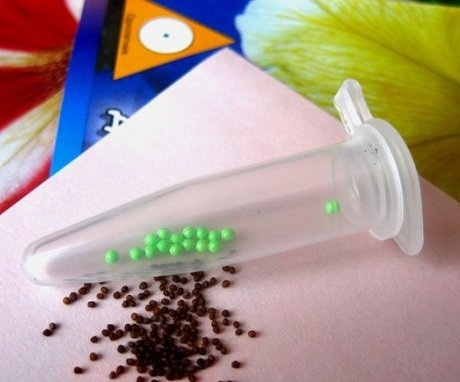
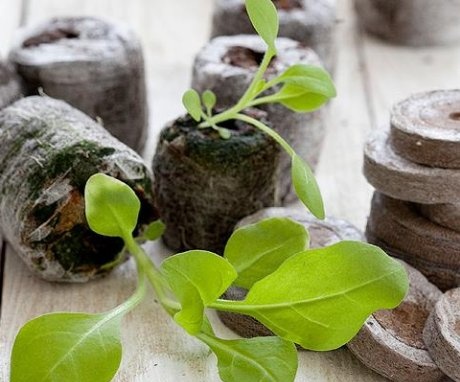
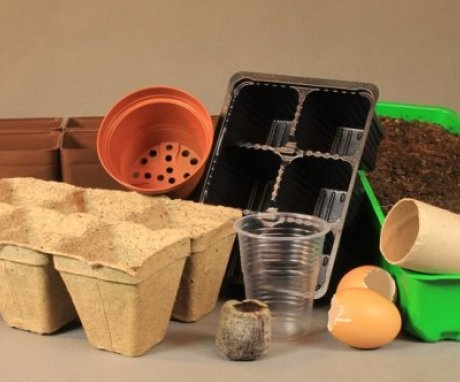
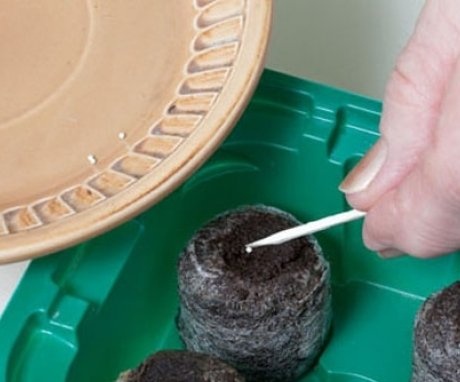
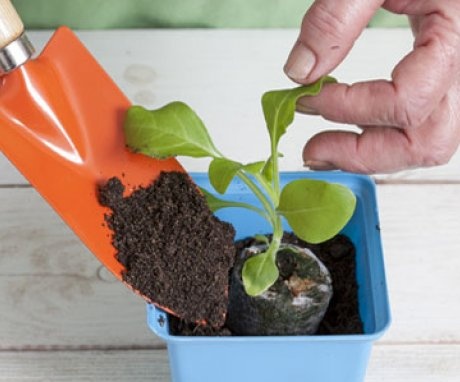
I have been creating a wonderful picture of petunias on my balcony for many years, but I still buy seedlings in a special store, since I could not grow them. I buy seedlings and plant them first in small pots, and then after a couple of weeks in permanent pots. And my beauties delight me until October.